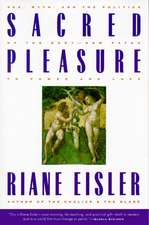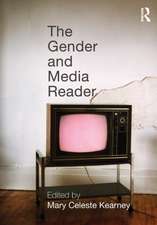Ester Boserup’s Legacy on Sustainability: Orientations for Contemporary Research: Human-Environment Interactions, cartea 4
Editat de Marina Fischer-Kowalski, Anette Reenberg, Anke Schaffartzik, Andreas Mayeren Limba Engleză Hardback – 2 sep 2014
Preț: 428.68 lei
Nou
Puncte Express: 643
Preț estimativ în valută:
82.04€ • 85.13$ • 68.57£
82.04€ • 85.13$ • 68.57£
Carte tipărită la comandă
Livrare economică 15-29 martie
Preluare comenzi: 021 569.72.76
Specificații
ISBN-13: 9789401786775
ISBN-10: 9401786771
Pagini: 267
Ilustrații: XXV, 267 p. 44 illus., 22 illus. in color.
Dimensiuni: 155 x 235 x 22 mm
Greutate: 0.59 kg
Ediția:2014
Editura: SPRINGER NETHERLANDS
Colecția Springer
Seria Human-Environment Interactions
Locul publicării:Dordrecht, Netherlands
ISBN-10: 9401786771
Pagini: 267
Ilustrații: XXV, 267 p. 44 illus., 22 illus. in color.
Dimensiuni: 155 x 235 x 22 mm
Greutate: 0.59 kg
Ediția:2014
Editura: SPRINGER NETHERLANDS
Colecția Springer
Seria Human-Environment Interactions
Locul publicării:Dordrecht, Netherlands
Public țintă
ResearchCuprins
PART I: Ester Boserup’s Intellectual Heritage.- 1. Ester Boserup: An Interdisciplinary Visionary Relevant for Sustainability.- 2. “Finding Out Is My Life”: Conversations with Ester Boserup in the 1990s.- 3. Boserup’s Theory on Technological Change as a Point of Departure for the Theory of Sociometabolic Regime Transition.- PART II Land Use, Technology and Agriculture.- 4. The Dwindling Role of Population Pressure in Land Use Change – a Case from the South West Pacific.- 5. Conceptual and Empirical Approaches to Mapping and Quantifying Land-Use Intensity.- 6. Malthusian Assumptions, Boserupian Response in Transition to Agriculture Models.- 7. Reconciling Boserup with Malthus: Agrarian Change and Soil Degradation in Olive Orchards in Spain (1750-2000).- 8. Beyond Boserup: The Role of Working Time in Agricultural Development.- PART III: Population and Gender.- 9. Following Boserup’s Traces: From Invisibility to Informalisation of Women’s Economy to Engendering Development in Translocal Spaces.- 10. Daughters of the Hills: Gendered Agricultural Production, Modernisation, and Declining Child Sex Ratios in the Indian Central Himalayas.- 11. Revisiting Boserup’s Hypotheses in the Context of Africa.- 12. An Interpretation of Large-Scale Land Deals Using Boserup’s Theories of Agricultural Intensification, Gender and Rural Development.- 13. Labour Migration and Gendered Agricultural Asset Shifts in Southeastern Mexico: Two Stories of Farming Wives and Daughters.- 14. Working Time of Farm Women and Small-Scale Sustainable Farming in Austria.- 15. A Human Ecological Approach to Ester Boserup: Steps Towards Engendering Agriculture and Rural Development.- 16. Conclusions: Re-Evaluating Boserup in the Light of the Contributions to this Volume.
Textul de pe ultima copertă
Arising from a scientific conference marking the 100th anniversary of her birth, this book honors the life and work of the social scientist and diplomat Ester Boserup, who blazed new trails in her interdisciplinary approach to development and sustainability.
The contents are organized in three sections reflecting important focal points of Boserup’s own work: Long-Term Socio-Ecological Change; Agriculture, Land Use, and Development; and Gender, Population, and Economy. The first three chapters offer a comprehensive review of her political and scientific work. Section Two focuses on the applicability of Boserup’s reflections on land use, technology, and agriculture, incorporating case studies which illuminate and test Boserup’s hypotheses on land use intensification and soil degradation, the impact of population growth on land use, the agricultural transition, and the role of women in development. The case studies examine both long historical time series and present-daydynamics, and explore different levels of geographical scale, from the local to the regional and the global. Section Three emphasizes the key role of women and gender relations for agriculture and development. Together, the 15 chapters in this volume show how the main strands of Boserup’s theories are reflected in contemporary research.
In sum, the diversity of the contributions to this book reflects the continuing impact of Ester Boserup’s work on scientific research today, and its likely influence on research for years to come.
The contents are organized in three sections reflecting important focal points of Boserup’s own work: Long-Term Socio-Ecological Change; Agriculture, Land Use, and Development; and Gender, Population, and Economy. The first three chapters offer a comprehensive review of her political and scientific work. Section Two focuses on the applicability of Boserup’s reflections on land use, technology, and agriculture, incorporating case studies which illuminate and test Boserup’s hypotheses on land use intensification and soil degradation, the impact of population growth on land use, the agricultural transition, and the role of women in development. The case studies examine both long historical time series and present-daydynamics, and explore different levels of geographical scale, from the local to the regional and the global. Section Three emphasizes the key role of women and gender relations for agriculture and development. Together, the 15 chapters in this volume show how the main strands of Boserup’s theories are reflected in contemporary research.
In sum, the diversity of the contributions to this book reflects the continuing impact of Ester Boserup’s work on scientific research today, and its likely influence on research for years to come.
Caracteristici
The first comprehensive scientific publication on the life and work of Ester Boserup one of the pioneers of sustainability research Includes contributions from experts in a wide range of disciplines: agricultural sciences, biology, geography, history, ecology, landscape planning, physics, sociology, environmental sciences and economics Presents a cross-section of contemporary sustainability research, with a special focus on the role of society-nature interrelations, agriculture and gender Includes supplementary material: sn.pub/extras
























